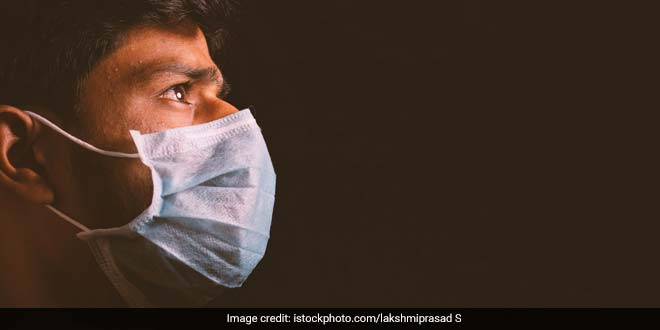Highlights
- Health workers, people with COVID-19 symptoms should wear medical masks
- People with no symptom of COVID-19 can wear a fabric mask: WHO
- Masks should be worn in areas where physical distancing isn’t possible: WHO
New Delhi: Face masks are one of the tools to reduce the risk of transmission of Novel Coronavirus causing the highly contagious disease COVID-19. In a recently released fresh set of guidelines, the World Health Organisation (WHO) has recommended the governments to encourage the public to wear face masks where there is a widespread transmission and physical distancing is difficult, such as on public transport, in shops or in other confined or crowded environments. In line with the same, the WHO has issued guidance on different kinds of masks and who should wear what, when and where.
Also Read: WHO Revises Guidelines On Usage Of Masks To Avoid COVID-19: All You Need To Know
According to a short video guide released by WHO, there are two kinds of masks – medical masks also known as surgical masks and fabric masks also known as non-medical masks.
https://www.instagram.com/tv/CBQn8dVgmer/?igshid=1i9q1490to7y6
Medical Masks
According to WHO, medical masks or surgical masks should be worn by health workers; people who have COVID-19 symptoms; individuals taking care of someone suspected or confirmed with COVID-19.
Along with this, in areas where COVID-19 is widespread and physical distancing of at least one meter cannot be achieved, medical masks should be worn by people who are aged 60 years old or above and those who have underlying health conditions. Reason being, they belong to the vulnerable group and have a greater risk of developing a serious illness.
Once the medical mask is soiled or damp, it should be discarded immediately, preferably in a closed bin.
Fabric Masks
The WHO suggests the use of fabric masks only for people who do not have COVID-19 symptoms. These masks are to be used where COVID-19 is widespread that is a lot of people in the community are infected with the SARS-CoV-2 and physical distancing of at least one meter cannot be achieved.
Fabric masks can be worn by anyone who is in close contact with others such as social workers, cashiers, and service providers at hotels, grocery stores and others.
Fabric masks should also be considered in busy public settings such as public transport like buses, share taxis and trains, workplaces, grocery stores, and other crowded environments, says the WHO.
The use of fabric masks which act as a barrier is pivotal as according to Centers for Disease Control and Prevention (CDC), US top medical body, a significant portion of individuals with coronavirus lack symptoms (are asymptomatic) and that even those who eventually develop symptoms (pre-symptomatic) can transmit the virus to others before showing symptoms.
An asymptomatic and pre-symptomatic person can transmit the virus while coughing, sneezing and speaking to someone in close proximity. Hence, CDC, WHO and the Ministry of Health and Family Welfare (MoHF&W) recommend the use of fabric mask which can even be stitched at home. However, according to WHO, ideally, fabric masks should have three layers of fabric.
The outer layer should be a water-resistant fabric. The inner layer should be water absorbent and the middle layer acts as a filter, said WHO in a guide on how to wear a fabric mask.
Unlike medical masks, fabric masks can be reused. If it’s not soiled, it can be stored in a clean plastic resealable bag whereas if it’s dirty, it can be washed with soap and water and later used.
The important point to note is, be it a medical mask or reusable, a mask alone cannot protect an individual from COVID-19. The use of mask needs to be paired with other preventive and precautionary measures that are practising social distancing – a physical distance of at least 1 meter and frequent hand washing.
Also Read: Widespread Face Mask Use Could Prevent Second COVID-19 Wave: Study
[corona_data_new]





























